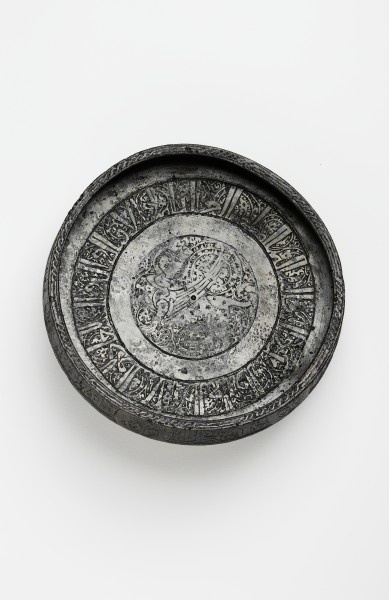Die flache Schale wird von drei kurzen Füßen gestützt und besteht aus einer gravierten Kupferlegierung, die ursprünglich mit Silber tauschiert war. Sie wurde in seldschukischen Zeiten (1038–1157) hergestellt. Im Spiegel der Schale ist eine Sphinx zu sehen, die von einer kufischen Inschrift umgeben ist. Die Sphinx als kraftvolles Fabelwesen (Buraq) ist ein häufig auf Metall und Keramik auftretendes Motiv der islamischen Kunst. Metallarbeiten wie dieses wurden oft geschwärzt, um das Dekor zu betonen.
Schenkung von Ph. Walter Schulz, Berlin, 1907. 1897 in Kaschan erworben.
en

